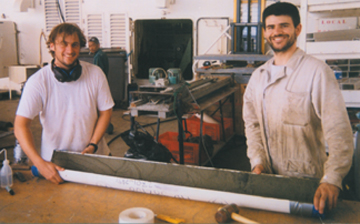
Geotimes Home | AGI Home | Information Services | Geoscience Education | Public Policy | Programs | Publications | Careers

 Now, two papers
published independently of each other in the July 12 issue of Science suggest
evidence for ENSO as far back as the Pleistocene. Contrary to earlier ideas, they
suggest that El Niño phases actually occurred in glacial times and global
cooling rather than during interglacial periods.
Now, two papers
published independently of each other in the July 12 issue of Science suggest
evidence for ENSO as far back as the Pleistocene. Contrary to earlier ideas, they
suggest that El Niño phases actually occurred in glacial times and global
cooling rather than during interglacial periods. |
Geotimes Home | AGI Home | Information Services | Geoscience Education | Public Policy | Programs | Publications | Careers |